EULAR Sjögren's Syndrome Disease Activity Index (ESSDAI ...
EULAR Sjögren's Syndrome Disease Activity Index (ESSDAI ...
EULAR Sjögren's Syndrome Disease Activity Index (ESSDAI ...
You also want an ePaper? Increase the reach of your titles
YUMPU automatically turns print PDFs into web optimized ePapers that Google loves.
inserm-00431527, version 1 - 12 Nov 2009<br />
Table 3. The <strong>EULAR</strong> Sjögren’s <strong>Syndrome</strong> <strong>Disease</strong> <strong>Activity</strong> <strong>Index</strong> (<strong>ESSDAI</strong>): Domain and item definitions and weights.<br />
Domain [Weight] <strong>Activity</strong> level Description<br />
Constitutional [3]<br />
Exclusion of fever of<br />
infectious origin and<br />
voluntary weight loss<br />
Lymphadenopathy [4]<br />
Exclusion of infection<br />
Glandular [2]<br />
Exclusion of stone or<br />
infection<br />
Articular [2]<br />
Exclusion of osteoarthritis<br />
Cutaneous [3]<br />
Rate as “No activity” stable<br />
long-lasting features related<br />
to damage<br />
Pulmonary [5]<br />
Rate as “No activity” stable<br />
long-lasting features related<br />
to damage, or respiratory<br />
involvement not related to<br />
the disease (tobacco use<br />
etc.)<br />
Renal [5]<br />
Rate as “No activity” stable<br />
long-lasting features related<br />
to damage, and renal<br />
involvement not related to<br />
the disease.<br />
If biopsy has been<br />
performed, please rate<br />
activity based on<br />
histological features first<br />
No = 0 Absence of the following symptoms<br />
Low = 1 Mild or intermittent fever (37.5°-38.5°C) / night sweats and/or involuntary weight loss of 5 to 10% of body weight<br />
Moderate = 2 Severe fever (>38.5°C) / night sweats and/or involuntary weight loss of >10% of body weight<br />
No = 0 Absence of the following features<br />
Low = 1 Lymphadenopathy ≥ 1 cm in any nodal region or ≥ 2 cm in inguinal region<br />
Moderate = 2 Lymphadenopathy ≥ 2 cm in any nodal region or ≥ 3 cm in inguinal region, and/or splenomegaly (clinically palpable or assessed by<br />
imaging)<br />
High = 3 Current malignant B-cell proliferative disorder<br />
No = 0 Absence of glandular swelling<br />
Low =1 Small glandular swelling with enlarged parotid (≤ 3 cm), or limited submandibular or lachrymal swelling<br />
Moderate = 2 Major glandular swelling with enlarged parotid (> 3 cm), or important submandibular or lachrymal swelling<br />
No = 0 Absence of currently active articular involvement<br />
Low = 1 Arthralgias in hands, wrists, ankles and feet accompanied by morning stiffness (>30 min)<br />
Moderate = 2 1 to 5 (of 28 total count) synovitis<br />
High = 3 ≥ 6 (of 28 total count) synovitis<br />
No = 0 Absence of currently active cutaneous involvement<br />
Low =1 Erythema multiforma<br />
Moderate = 2 Limited cutaneous vasculitis, including urticarial vasculitis, or purpura limited to feet and ankle, or subacute cutaneous lupus<br />
High = 3 Diffuse cutaneous vasculitis, including urticarial vasculitis, or diffuse purpura, or ulcers related to vasculitis<br />
No =0 Absence of currently active pulmonary involvement<br />
Low = 1 Persistent cough or bronchial involvement with no radiographic abnormalities on radiography<br />
Or radiological or HRCT evidence of interstitial lung disease with: No breathlessness and normal lung function test.<br />
Moderate = 2 Moderately active pulmonary involvement, such as interstitial lung disease shown by HRCT with shortness of breath on exercise (NHYA II)<br />
or abnormal lung function tests restricted to: 70% >DLCO≥ 40% or 80%>FVC≥60%<br />
High = 3 Highly active pulmonary involvement, such as interstitial lung disease shown by HRCT with shortness of breath at rest (NHYA III, IV) or<br />
with abnormal lung function tests: DLCO< 40% or FVC< 60%<br />
No = 0 Absence of currently active renal involvement with proteinuria< 0.5 g/d, no hematuria, no leucocyturia, no acidosis, or long-lasting stable<br />
proteinuria due to damage<br />
Low = 1 Evidence of mild active renal involvement, limited to tubular acidosis without renal failure or glomerular involvement with proteinuria<br />
(between 0.5 and 1 g/d) and without hematuria or renal failure (GFR ≥60 ml/min)<br />
Moderate = 2 Moderately active renal involvement, such as tubular acidosis with renal failure (GFR 1.5 g/d or hematuria or renal failure (GFR


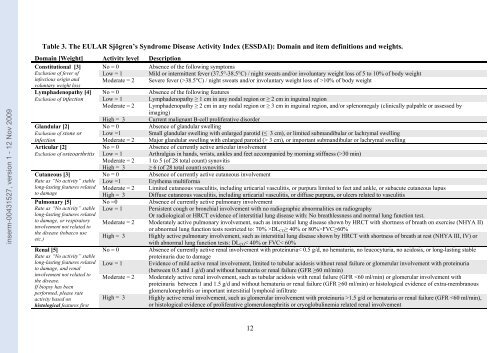

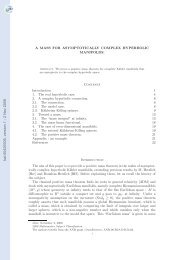
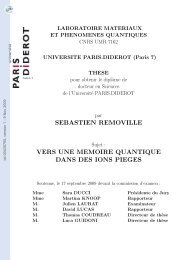
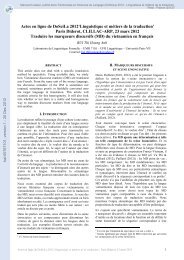
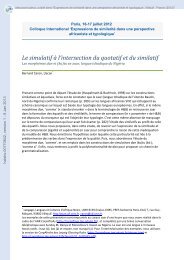
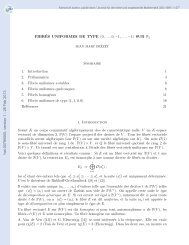
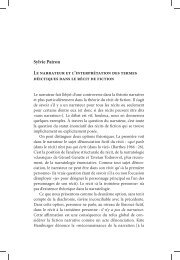
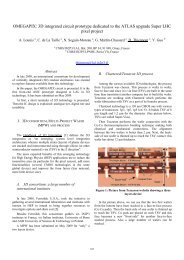
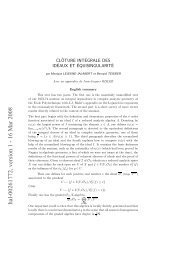
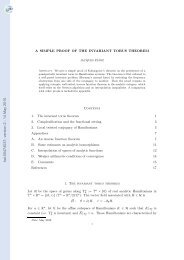

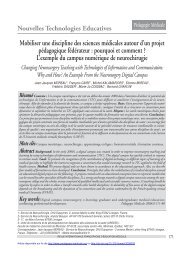

![[tel-00433556, v1] Relation entre Stress Oxydant et Homéostasie ...](https://img.yumpu.com/19233319/1/184x260/tel-00433556-v1-relation-entre-stress-oxydant-et-homeostasie-.jpg?quality=85)